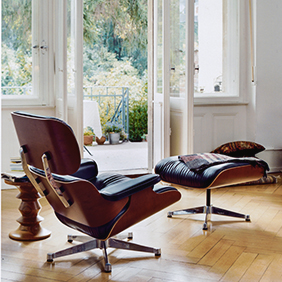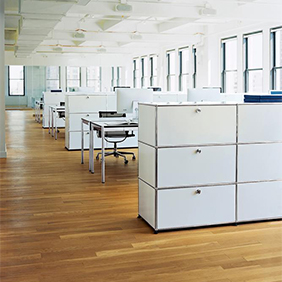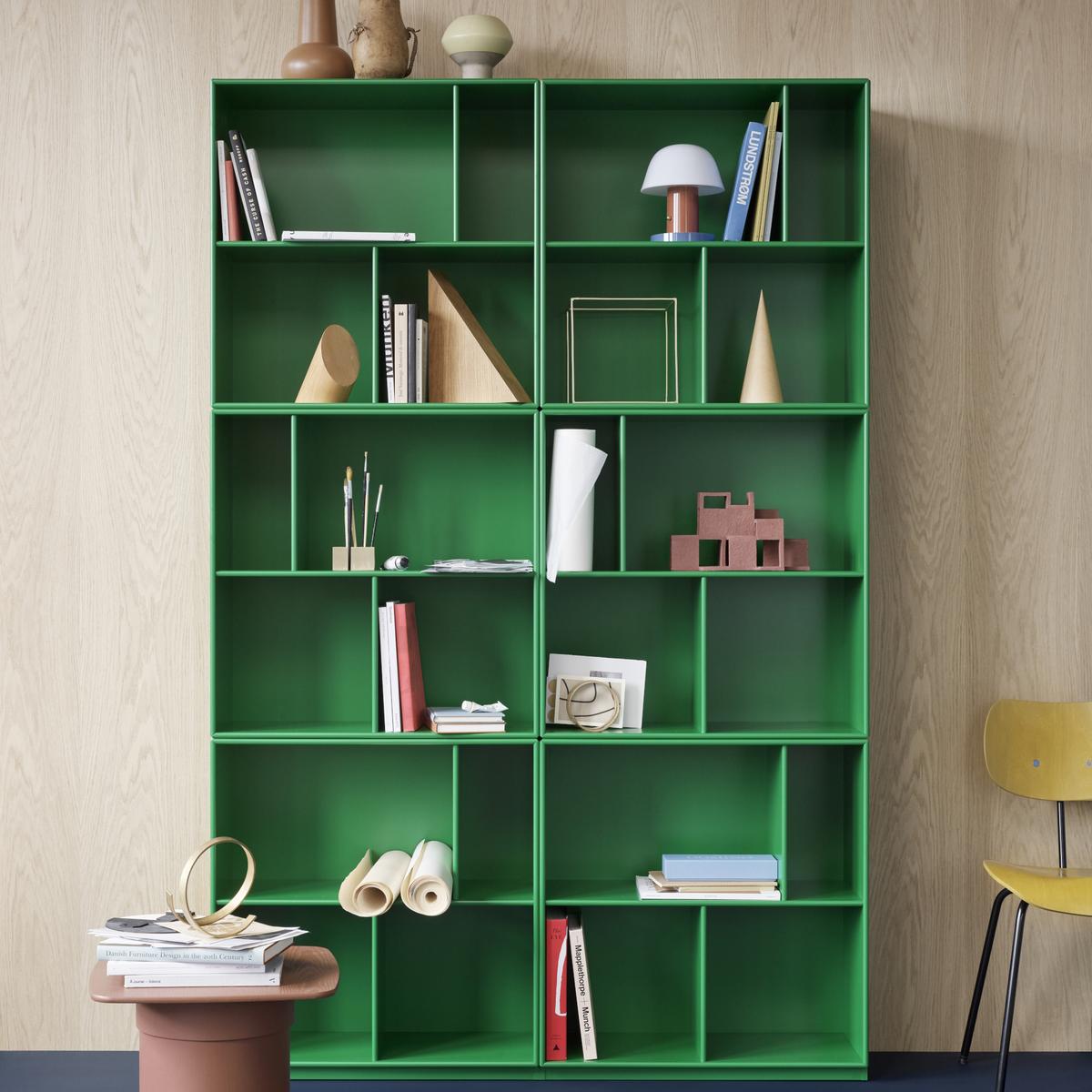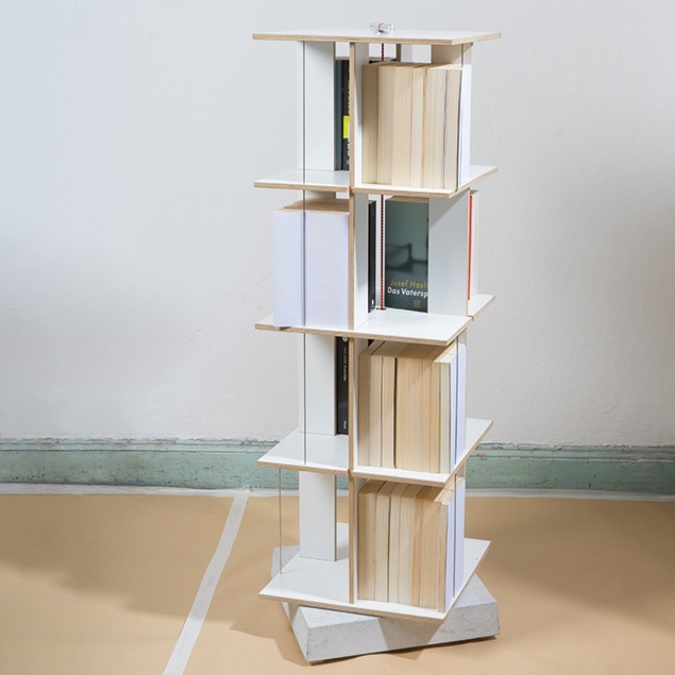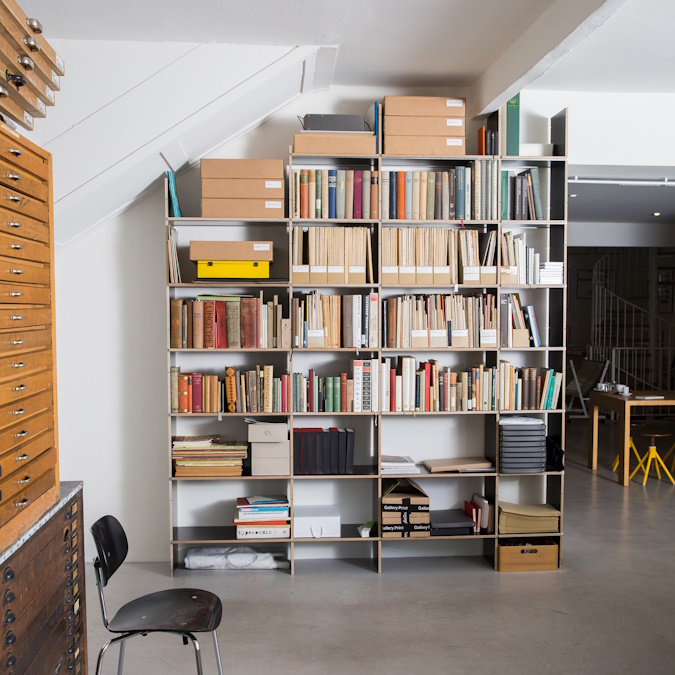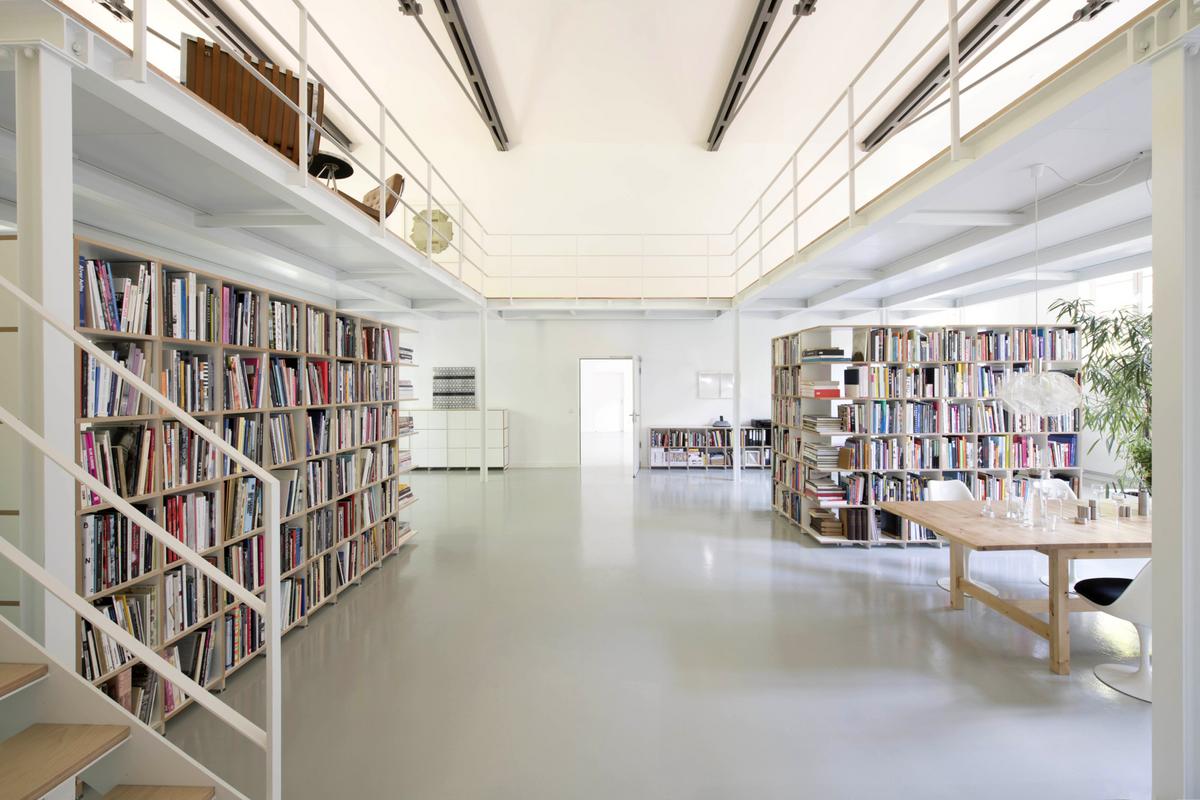Bookshelves
Designer bookshelves for the home: function, types and materials
Although as digitalisation increases ever more individuals are reading electronically, most people still read physical books. Which means, sooner or later, we all need to buy a bookshelf. In addition bookshelves, especially when they extend over the entire height of the wall, have a very homely and stylish look, transform any room into a place where you enjoy spending time. Before buying a bookshelf there a few important aspects to consider:
► Function of a bookshelf: What do I want to store where?
► Wall unit or free-standing bookshelf? (with design classic tips)
► Which material for the designer bookshelf?
► Bookshelves: Design Variety
► Design it yourself: create bookshelves digitally
Function of a bookshelf: What do I want to store where?
Before you buy you should carefully consider what items you want to store in your bookshelf and where it is to be placed. A bookshelf should be easily accessible, and in the study or living room where books are also used: if a bookshelf is not directly accessible, sooner or later you will resort to other storage areas and other objects will accumulate in the bookshelf.
Open or closed? A classic bookcase or as a piece of furniture with a sideboard function? Before you buy always be clear about the exact function the furniture object should fulfil:
► Should the bookshelf simply serve to structure your book collection decoratively and clearly? Then we recommend classic bookshelf, such as the FNP X from Moormann with a compartment depth of 21 cm.
► Will the shelving be used primarily in the work area? If so we recommend bookshelves with a shelf height of 33 cm, which are also suitable for ring binders.
► Is design particularly important to you and do you want a designer bookshelf that will be an eye-catcher and will enhance your interior? Then we recommend the String Pocket Metal in orange, Bookworm by Kartell, USM Haller shelf with plant insert or one of our highlighted four original designs
► Do you like to rearrange your interior frequently or are you planning to move house in the future? If so, the height of free-standing shelves should not exceed 230 cm so that the shelving also fits under low ceilings. Also choose a bookshelf that can be subsequently modified, reduced or extended.
Wall unit or free-standing bookshelf? (with design classic tips)
The decision between a wall unit and a free-standing bookshelf depends on various factors; however, the size of the room and the requirements of the object are particularly important for making the right choice.
Designer wall units
Wall units save space and create a warm, homely atmosphere because the books remain visible and thus open up the wall structure. They are particularly suitable as small bookshelves and are a good option when space is limited as they can also be placed, for example, above a sofa or a door
An absolute classic among the bookshelves for mounting on the wall is the modular String system, whose shelves can be adjusted in height as required. A major advantage of the String bookshelves is that they can subsequently be expanded through additional shelves, desk tops and side panels when the book collection becomes larger.
Free-standing designer bookshelves
Free-standing bookshelves are particularly practical and flexible to assemble and use. Many objects from manufacturers such as Richard Lampert, USM Haller or Nils Holger Moormann can also be individually configured, meaning they fit neatly along a wall or in a corner. They can be assembled and disassembled in height and serve as room dividers.
The Mocoba shelving system allows you to configure free-standing, stepped, designer bookshelves that can also be used in corners or cut to fit under stairs. Such shelving systems are a particularly good choice for large book collections or libraries. Mocoba designer shelves can be individually configured or can be purchased as pre-configured systems.
Which material for the designer bookshelf?
Choosing the right material for a bookshelf plays a crucial role in terms of aesthetics, durability and the overall impression of a room. At smow you can choose between bookshelves made from various high-quality materials, including wood in various finishes and metal.
Wooden bookshelves: Properties
Wooden bookshelves harmonise perfectly with books due to their natural, warm appearance and their tactile and functional properties. They are therefore a particularly popular and widespread option. Manufacturers such as Nils Holger Moormann, Richard Lampert or String rely on high-quality plywood panels that are varnished or veneered, or on fine solid wood.
Plywood is perfect for the construction of even very large bookshelves that need to withstand high loads, requires only minimal maintenance and is very durable. Depending on the type of wood and surface, wooden bookshelves each have their own effect in the room.
Metal bookshelves: Features
In contrast to wooden bookshelves, metal bookshelves have a very modern and light look. Particularly minimalist, versatile and easy to install is the multifunctional Pier shelving system from Hay made of die-cast aluminium, which can be individually adapted as a bookshelf to suit the book collection.
The classic amongst metal bookshelves come from USM Haller. Bookshelves from USM Haller are characterized by timeless design, modularity and high quality. The metal shelves and units are particularly robust, easy to clean and available in different colours, which increases the scope for interior design. In addition, they are expandable and can be retrofitted.
Bookshelves: Design Variety
Design classics: Three tips for bookshelves
Among our bookshelf designs you will find numerous design classics that not only offer practical storage solutions, but also make an aesthetic statement. Anyone who puts up these shelves reveals themselves to be a design connoisseur.
Designed in 1932:
Egon Eiermann's bookcase consists of two steel rods on which the shelves are attached at variable heights - a distinctive feature that makes it instantly recognisable.
Designed in 1954:
The architect Herbert Hirche designed his shelving system in the 1950s. Since 2019, it has once again been available in a re-edition through Richard Lampert.
Bookcases in Scandinavian design
Scandinavian bookcase designs are characterised by a harmonious combination of functionality and simple aesthetics. Typical of this style are clear lines, bright colours and natural materials such as light wood.
Scandinavian bookcases are often designed in a minimalist style, with the focus on an open, airy structure. The simple elegance of bookshelves in Scandinavian design gives rooms a simultaneous cosy and modern agency. The proximity to nature is reflected in Scandinavian manufacturers not only in the design, but also in the use of sustainable materials. These include the Swedish String bookcase system and the Danish furniture manufacturer Muuto with its Stacked shelving system or the versatile shelving system from the Danish manufacturer Montana.
Forms:
Ron Arad designed the original Bookworm bookshelf for Kartell, and a work which looks like a wall sculpture with its ornamental curves.
Colours:
Colours play a crucial role in unusual bookshelf designs, whether in the form of strong contrasts or particularly striking colours. The Montana shelving system impresses with its choice of over 40 available colours.
Arrangement:
The Konnex shelving elements from Müller Small Living become a labyrinth-like shelving structure thanks to their creative, nested arrangement. The Konnex shelving boxes look as if they were pushed into one another.
Angular:
The ES shelf from Nils Holger Moormann, with its over-extended angles, looks like its been incorrectly assembled. But that is intentional. And, despite appearances, is still stable. A shelf for individualists and pioneers.
Design it yourself: create bookshelves digitally
Since the requirements for bookshelves in particular vary greatly depending on needs, room situation and furnishing style, there are shelving systems that can be individually configured using drag & drop due to their modular design - at home on laptop or tablet.
For these bookshelves you can not only choose the material, but also determine the size, shape and color according to your individual needs: loose sheets of paper, CDs, books or file folders? With the Moormann shelving configurator, for example, the compartment height can be selected according to the respective use. The configuration options for shelves from Mocoba are particularly diverse: open, with doors, high and narrow or as a low book lowboard - everything is possible.
Re-design and retrofit bookshelves
Modular designer shelving systems score points with flexibility in context of our ever changing needs: they can be expanded or reduced with additional modules, or shelves can be added or removed as and when required.
The expandable shelving systems include:
► FNP and FNP X Regal from Nils Holger Moormann
► USM Haller system: larger USM Haller conversion plans can be planned and organised in person at your local smow Store
► Mocoba shelving system: Plan yourself or have it configured in the smow Store
► Herbert Hirche Shelving System DHS10 through Richard Lampert


